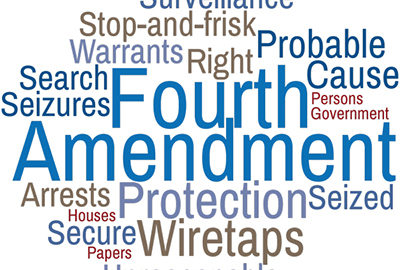Federal Criminal Appeals Lawyer call 1-800-APPEALS (1-800-277-3257)
US v. Lambis
197 F.Supp.3d 606
Decided on July 12, 2016
Issue:
Is Defendant Entitled to a Suppression of Evidence
Whether defendant is entitled to a suppression of evidence obtained after the warrantless use of a cell-site simulator, known as a “StingRay,” to identify defendant’s apartment as the location of a target cell phone.
Holding:
Suppression of Evidence Granted After Unreasonable Search Using StingRay Technology
The Court held that the warrantless use of the StingRay to target defendant’s apartment was an unreasonable search under the Fourth Amendment; defendant’s motion to suppress evidence was granted.
Federal Criminal Appeals Lawyer call 1-800-APPEALS (1-800-277-3257)
Facts:
In 2015, the Drug Enforcement Administration (DEA) conducted an investigation into an international drug-trafficking organization, and as part of the investigation, the administration sought a warrant for pen register information and cell site location information (CSLI) for a target cell phone. CSLI is a record of non-content-based location information from the service provider derived from “pings” sent to cell sites by target cell phones. Using CSLI, DEA agents approximated the target cell phone’s location in the Washington Heights area, but were unable to identify the specific apartment building.
To more precisely isolate the location, the DEA employed a technician with a cell-site simulator, sometimes referred to as a “StingRay” “Hailstorm” or “TriggerFish.” This device locates cell phones by mimicking the service provider’s cell tower and forcing cell phones to transmit “pings” to the simulator. By calculating the strength of the pings, the target phone is pinpointed. The StingRay identified Lambis’s apartment as the most likely location of the cell phone. The DEA agents knocked on the door and obtained consent from Lambis’s father to enter the apartment. Once inside, they obtained Lambis’s permission to search the bedroom, from which they recovered narcotics, digital scales, empty ziplock bags and other drug paraphernalia. Lambis sought to suppress the evidence.
Analysis:
Kyllo v. US
In Kyllo v. United States, 533 U.S. 27, 33, 121 S.Ct. 2038, 150 L.Ed2d 94 (2001), the Supreme Court held that a Fourth Amendment search occurred when government agents used a thermal-imaging device to detect infrared radiation emanating from a home. The Court rejected the Government’s argument that because the device only detected “heat radiating from the external surface of the house,” there was no search. The Court explained in Kyllo that, “where…the Government uses a device that is not in general public use, to explore details of the home that would previously have been unknowable without physical intrusion, the surveillance is a ‘search’ and is presumptively unreasonable without a warrant.” The trial court explained that here, as in Kyllo, the DEA’s use of the cell site simulator was an unreasonable search because it revealed “details of the home that would previously have been unknowable without physical intrusion.”
DEA Obtained Warrant for CSLI, Not Cell-Site Simulator
The trial court explained that the DEA’s use of the cell-site simulator was not contemplated by the original warrant application. Absent that warrant, “the Government may not turn a citizen’s cell phone into a tracking device.” The Government argues, however, that exceptions apply in this case as any taint arising from the search dissipated when the agents obtained consent to enter the apartment and the bedroom. But the court explained that any “procurement of a ‘voluntary’ consent to search based upon prior illegal search may taint the consent.” (United States v. Tortorello, 533 F.2d 809, 815 (2d Cir. 1976), and it concluded that the consent was so tainted in this case. Lambis’s motion to suppress the evidence recovered by DEA agents was granted.
